Your cart is currently empty!
Importance of Handmade Area Rugs: Elevating Home Aesthetics with Craftsmanship

Handmade area rugs serve as more than just a floor covering; they are a blend of art, history, and personality that contribute significantly to the interior design of a space. Each rug tells a story through its unique patterns, materials, and weaving techniques. These pieces become the silent background of a home’s design, grounding the furniture and setting a tone that reflects my individual style while recognizing a timeless craft.
Incorporating a handmade area rug into a room is an acknowledgment of the intersection between function and beauty. These rugs add warmth, comfort, and acoustic balance to an area while also defining spaces within larger rooms. As a crucial design element, they can act as a focal point or complement the surrounding decor. As I curate these textiles for my home, I am mindful of their power to transform an interior with elegance and authenticity.
Key Takeaways
- Handmade area rugs add a storytelling element to interior design.
- These rugs contribute functional benefits and aesthetic harmony to a space.
- Careful selection of a handmade rug can redefine a room’s ambiance.
Historical and Cultural Significance
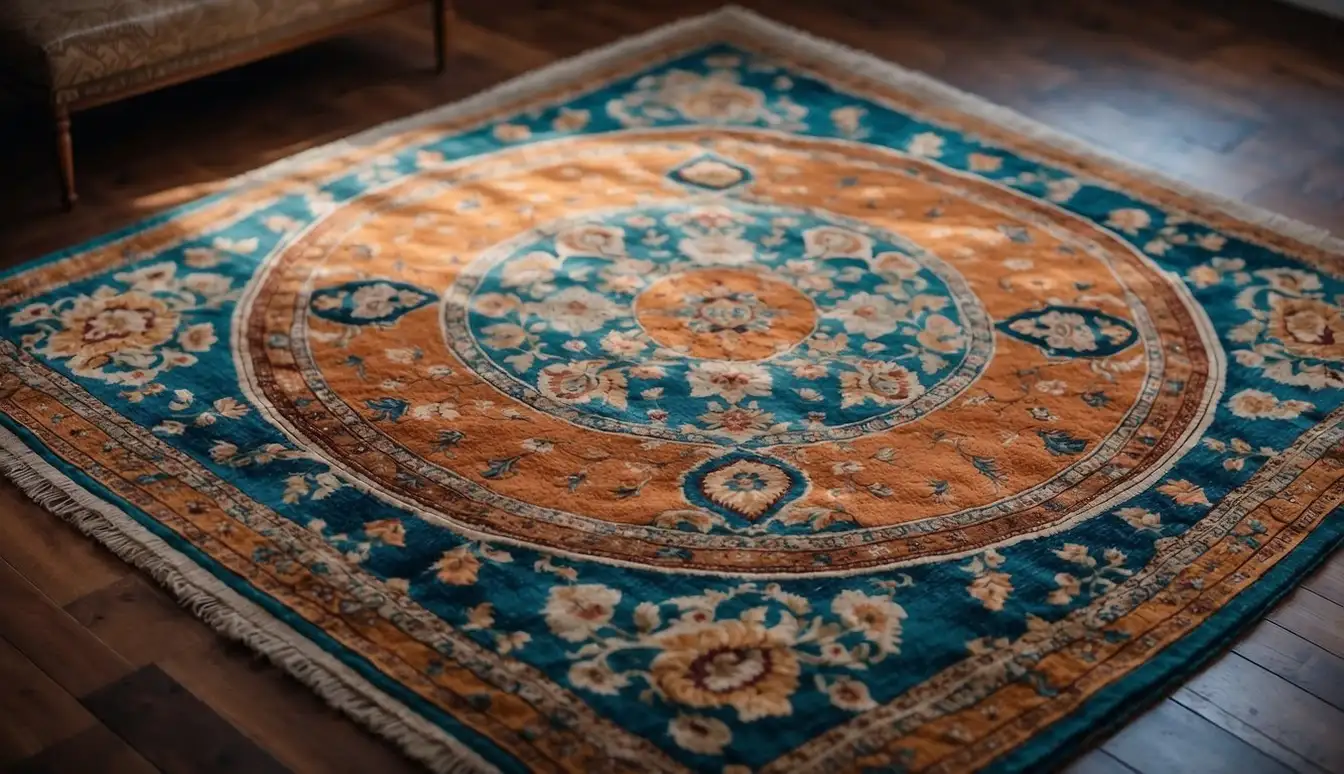
Handmade area rugs are not just floor coverings; they’re a testament to human history and cultural richness. In this section, my focus is on how these rugs have served as a conduit of tradition and an expression of artistry throughout the centuries.
History and Tradition of Handmade Rugs
Persia, known as a cradle of rug-making, has offered to the world unparalleled weaving techniques and designs. The history of rug weaving is so rich that it’s considered an essential part of the cultural heritage of this region. We can trace the emergence of rug making back thousands of years, with each piece reflecting the skill and dedication of the artisans who created it. Craftsmanship in this art form is highly revered, often passed down through generations in a tradition that cements family and community bonds.
Cultural Significance and Artistry
The cultural significance of handmade rugs can hardly be overstated. These are more than mere objects; they are embodiments of stories and beliefs. Each hand-tied knot and color choice represents a part of the weaver’s worldview, textured with spiritual or societal symbols. I see rugs as living pieces of art that reflect the values and aesthetics of the cultures they come from. Investing in a handmade rug is not just a financial decision; it’s an investment in preserving and appreciating a slice of human history and artistic expression.
Design Elements and Aesthetics
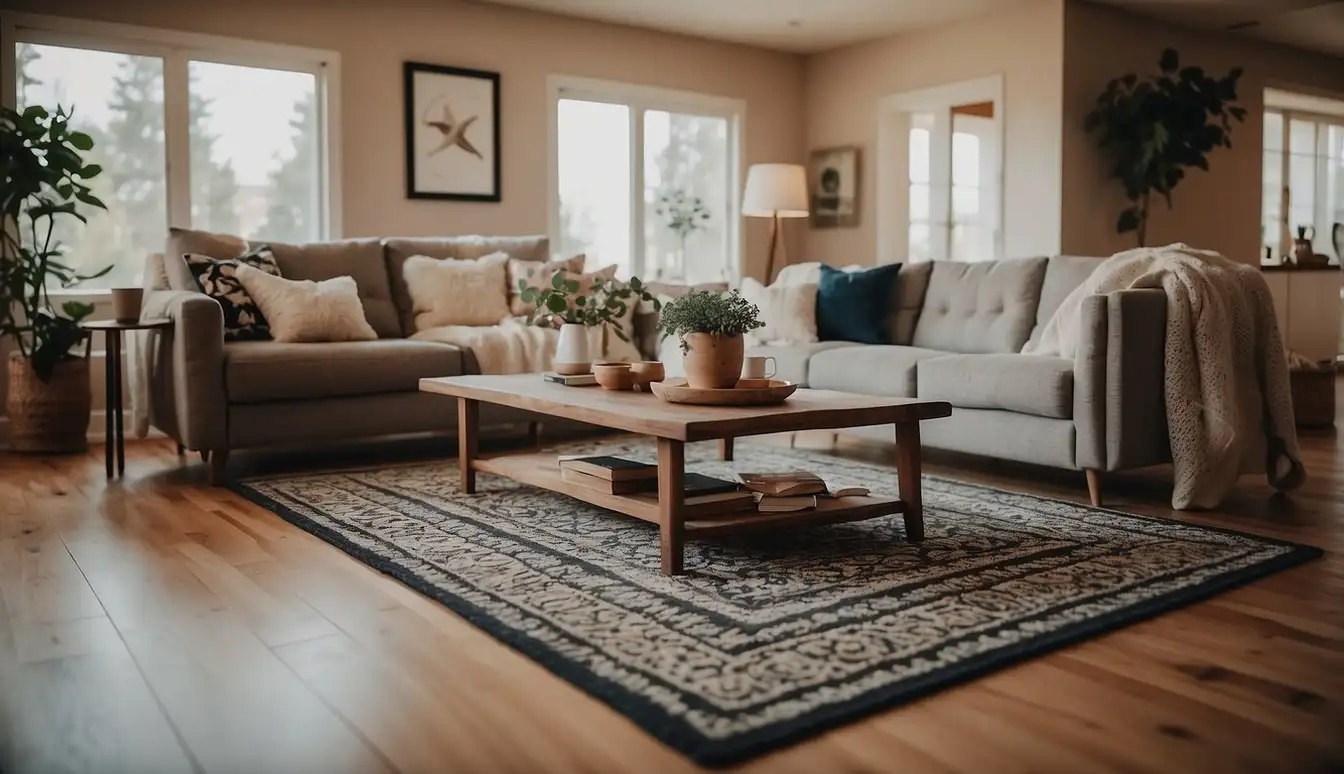
In my experience, the use of handmade area rugs is integral to the composition of a room’s design. These rugs serve as an artistic anchor, harmonizing color, pattern, texture, and material to enhance the aesthetic appeal of any interior.
Color and Pattern
When I select a rug, my first consideration is often its color and pattern. A well-chosen color palette can elevate a room’s mood, while patterns add depth and interest to the space.
- Geometric patterns: They bring a sense of order and can be quite versatile, fitting into modern and traditional settings alike.
- Abstract designs: These patterns are perfect for adding a touch of modern artistry and uniqueness to a room.
In either case, it’s essential to balance the rug’s colors and patterns with the room’s existing decor to ensure harmony and cohesion.
Texture and Material
The texture and material of a rug are just as critical to its function in design. As someone who’s felt the difference, I can say that natural fibers like wool, silk, and cotton not only exhibit luxurious textures but are also durable.
- Wool: Offers warmth and a soft, comforting texture to a room.
- Silk: Introduces a lustrous sheen and fine detailing.
- Cotton: Provides a casual and versatile texture, suitable for various styles.
Textures contribute to the tactile experience of an interior, and the material can influence both the style and the longevity of the rug. A blend of these elements in handmade area rugs brings character and a tactile dimension to interiors, which I find invaluable in my approach to design.
Functional Benefits of Area Rugs
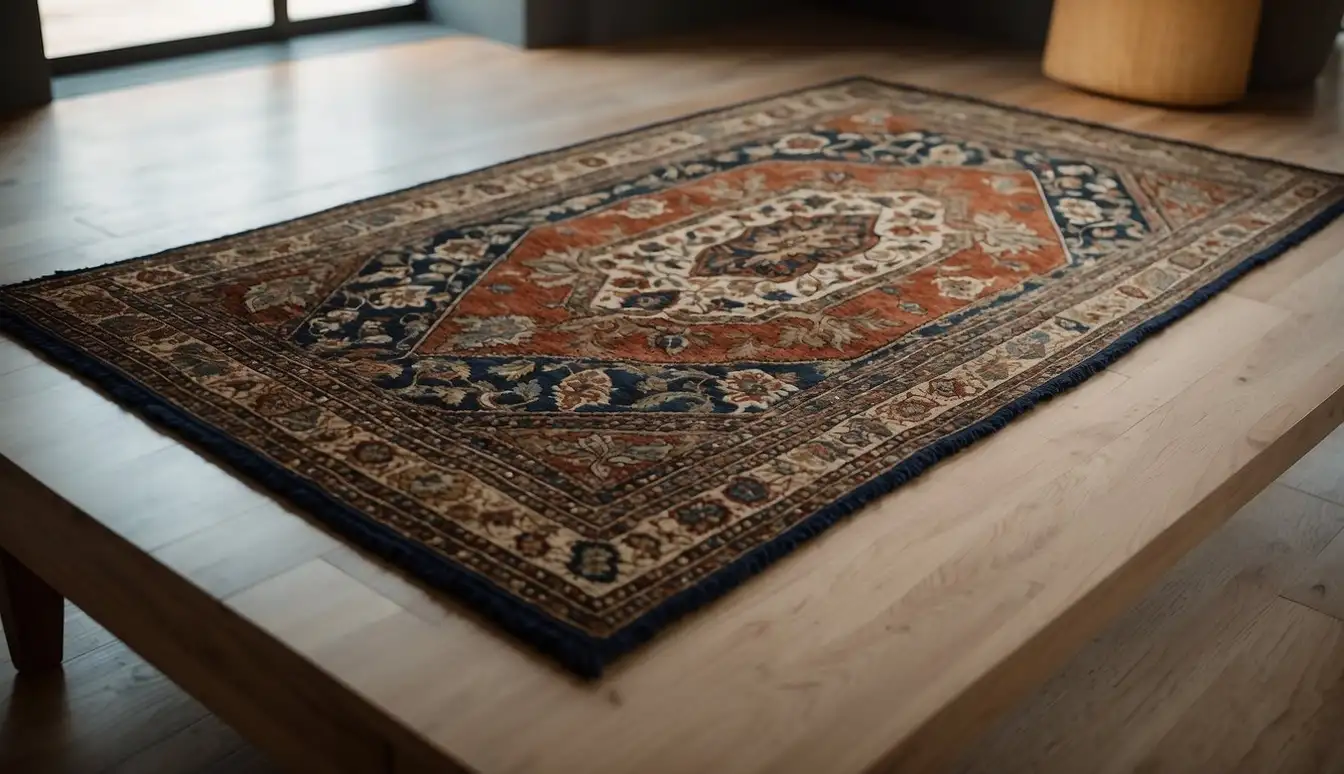
In exploring the functional benefits of handmade area rugs, I’m delighted to share my insights on their role in enhancing comfort, managing acoustics, and providing long-lasting service in our living spaces.
Comfort and Warmth
I find that the textural warmth and physical comfort of area rugs are unmatched. During colder months, the dense fibers of a high-quality rug retain heat, making a room feel cozily warm underfoot. Rugs also add a plush barrier between my feet and hard flooring, which I appreciate after a long day.
- Materials for Optimal Warmth: Wool, silk, shag
- Ideal Placement: Bedrooms, living areas
Sound Absorption and Noise Reduction
I’ve noticed a significant difference in the acoustics of a room once an area rug is introduced. Rugs are excellent at sound absorption, especially in echo-prone spaces with hard surfaces. They reduce noise levels and contribute to a serene atmosphere, which is essential in bustling homes or apartments.
- Materials that Enhance Acoustics: Thick piles, high-density fibers
- Areas Benefiting Most: Home offices, entertainment rooms
Durability and Maintenance
From my experience, the durability of handmade area rugs, especially those crafted from high-quality materials, is a substantial benefit. They withstand heavy foot traffic while remaining easy to clean. Strategic placement in high-traffic areas ensures longevity and a consistently tidy appearance.
- Materials Known for Durability: Wool, polyester
- High-Traffic Areas: Foyers, dining rooms
Choosing a handmade area rug is not just an aesthetic decision; it’s an investment in a comfortable, serene, and hard-wearing addition to my living space.
Area Rug Selection and Placement
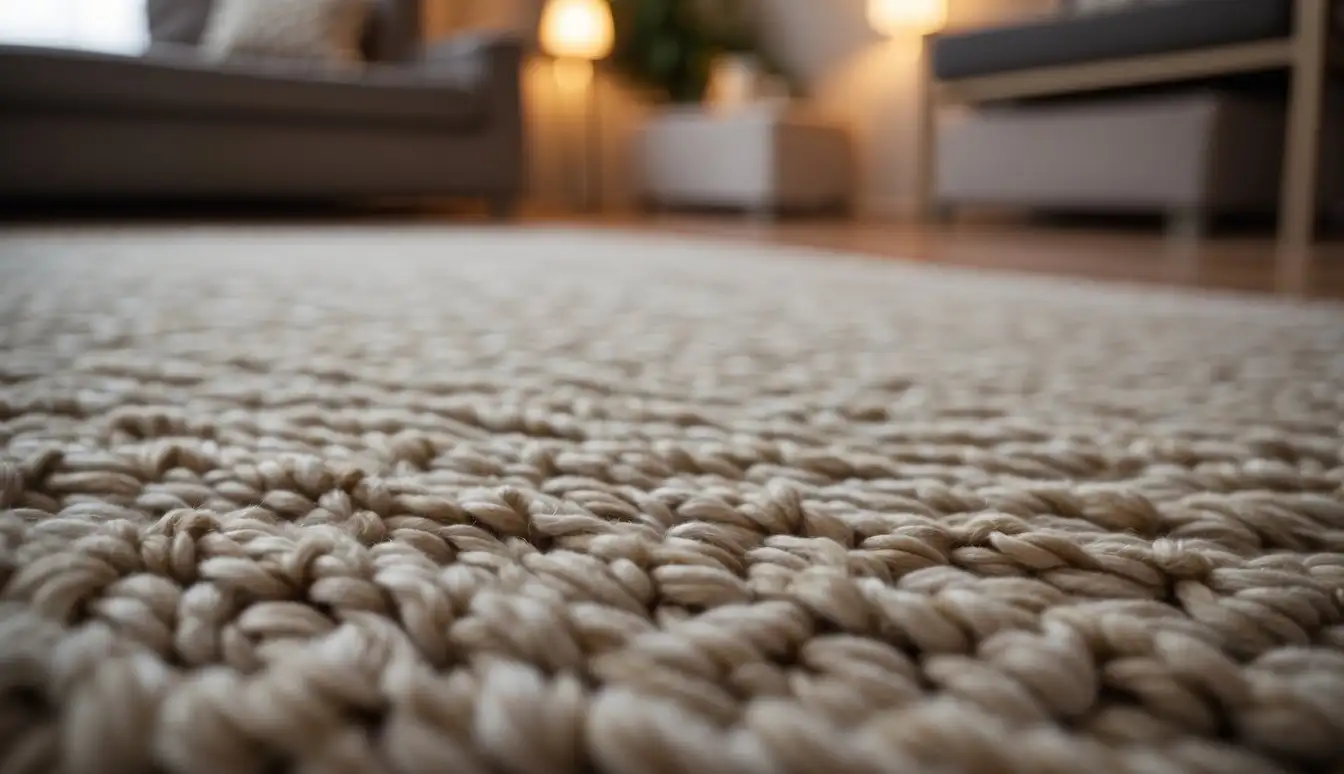
When I’m designing a space, choosing the right area rug and placing it appropriately is crucial for tying the room together and creating a harmonious interior.
Sizing and Arrangement
The size of an area rug is pivotal as it defines the space and contributes to the traffic flow within a room. For a living room, a larger rug like an 8′ by 10′ is usually ideal. I tend to position the furniture so that at least the front legs rest on the rug, also ensuring that there is enough space around the edges for people to walk around comfortably.
- Bedroom: For bedrooms, under-the-bed placement is a go-to, with a rug size that extends around 18-24 inches past the sides of the bed for a cozy landing.
- Dining Room: In dining rooms, I select a rug that extends at least 24 inches beyond the table, allowing the chairs to remain on the rug even when pulled out.
Choosing the Right Rug
Selecting the perfect rug is an amalgamation of finding the right material, color, pattern, and texture. The choice needs to reflect the room’s usage; for instance, in high-traffic areas like hallways and busy living rooms, I opt for durable materials like wool.
- Color and Pattern: I choose a color that complements the existing décor. For bold rooms, a neutral rug can ground the space, whereas in more understated rooms, a rug with a vibrant pattern can serve as a focal point.
- Textures: I experiment with textures, combining smooth and rough textures across furniture and rugs to add depth to the design.
Placement and Zoning
The artful placement of a rug is essential to divide larger areas into zones. This is particularly useful in an open floor plan where you want to delineate the living room area from the dining space. For better furniture alignment and cohesiveness:
- Living Room: Centering the rug under a coffee table or ensuring it anchors the seating arrangement helps define the zone.
- Bedroom: I often use smaller rugs on either side of the bed to separate the sleeping area from a reading nook or desk space.
- Dining Room: A well-sized rug under the dining table can visually isolate the eating area from the rest of the room.
Interior Design and Room Transformation
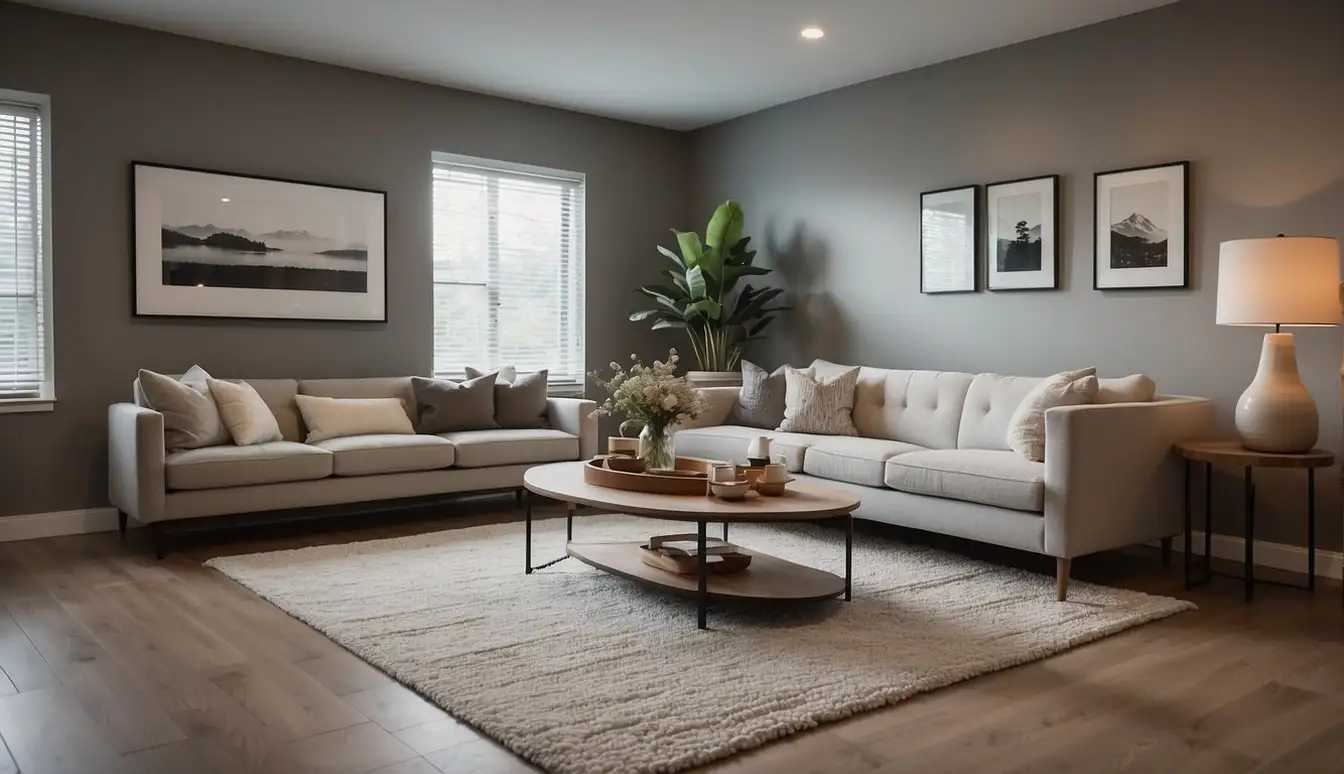
In my experience, a thoughtfully chosen handmade area rug can utterly transform an interior space. Not only does it inject personality, but it also serves to create a harmonious or contrasting aesthetic while defining different zones within a room.
Harmony and Contrast
I’ve found that handmade area rugs are pivotal in achieving that desired balance between harmony and contrast in a living room. When I select a rug, I ensure that:
- Its colors and patterns either complement or thoughtfully clash with the room’s existing palette and decor.
- The design creates a focal point that draws the eye, adding layers of visual interest without overwhelming the space.
Through the introduction of patterns or hues that resonate with the room’s theme, I’m able to craft a cohesive and inviting atmosphere. Conversely, a rug with contrasting elements can serve as a bold statement that adds dynamism to a room.
Anchoring Furniture and Space Definition
I consider area rugs as a foundation upon which I anchor furniture to delineate specific areas within a space, especially in open-plan layouts. Here’s how I do it:
- Living Room: I position the rug so that it sits under the front legs of sofas and chairs, which ties the pieces together and defines the seating area.
- Dining Area: Placing a larger rug under the dining table and chairs creates a discrete zone for dining, even within a larger room.
By doing so, I not only define the space but also ensure that the furniture arrangement looks intentional and grounded. This strategic placement contributes to a well-designed space that feels both harmonious and functional.
The Value of Handmade Area Rugs
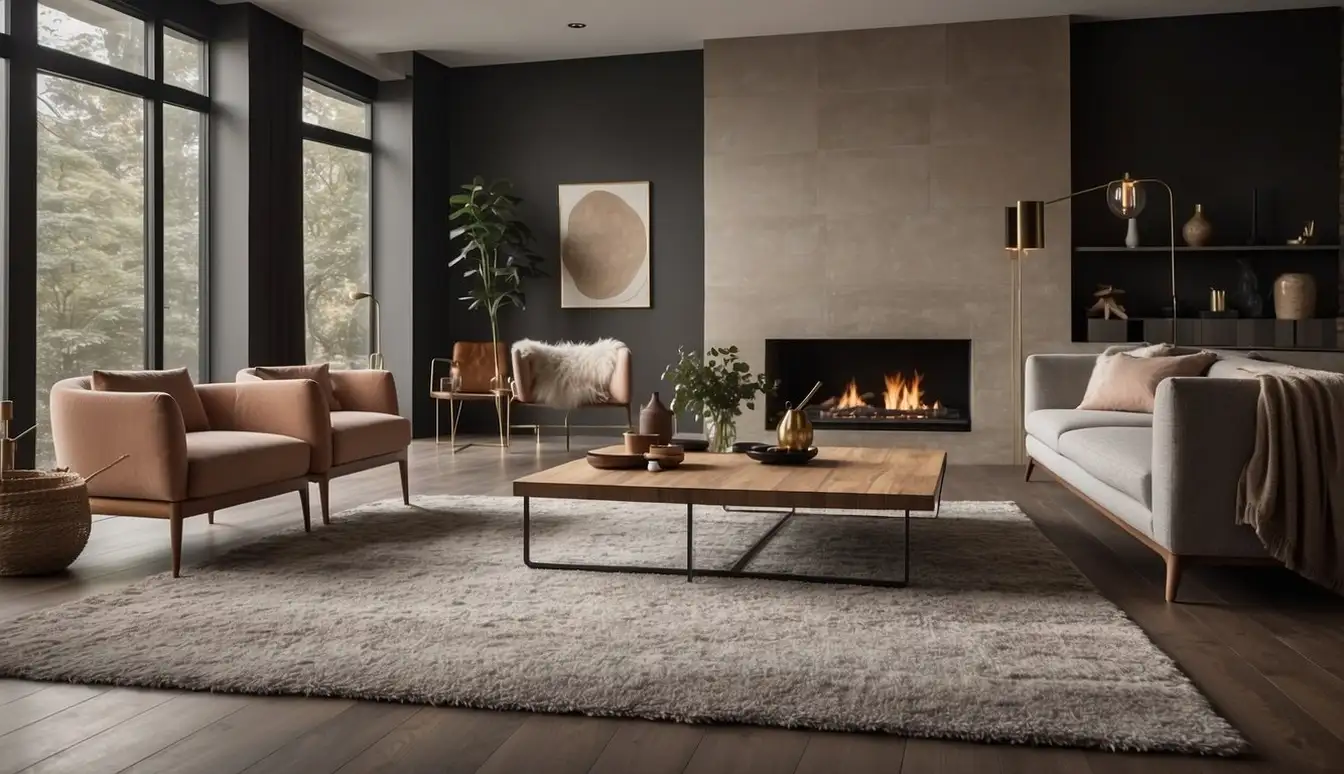
I believe that among interior design elements, handmade area rugs stand out due to their distinctive charm and enduring quality. These pieces add more than just a touch of style—they infuse spaces with personality and often become a focal point in any room.
Uniqueness and Character
Handmade rugs are akin to one-of-a-kind masterpieces that introduce a unique spirit into interior design. Each rug embodies the meticulous dedication of its artisan, which is evident in the distinct patterns and rich colors. It’s this uniqueness that gives a room its character and ties together diverse elements of furniture, creating a cohesive and inviting space.
- Personality: Every handmade rug carries whispers of its weaver’s story, adding layers of personality to the floors they grace.
- Rich Colors & Patterns: The use of natural dyes results in rich, vibrant colors that machine-made rugs often can’t replicate.
Investment in Quality
As an investment, handmade rugs offer both aesthetic and financial benefits. The craftsmanship involved ensures each rug is durable enough to withstand the test of time, allowing them to be passed down as heirlooms.
- Durability: Made with high-quality materials and by expert hands, these rugs often last for generations.
- Versatility: Their timeless nature means they adapt well to various decors as trends change over the years.
- Appreciation Potential: Given their durability and unique character, some handmade rugs may appreciate in value.
Handmade area rugs not only embellish a space but they reflect a commitment to quality that mass-produced items simply cannot match. My appreciation for these textiles grows with every addition to my home, reinforcing my belief in their irreplaceable value.
Enhancing Style and Elegance
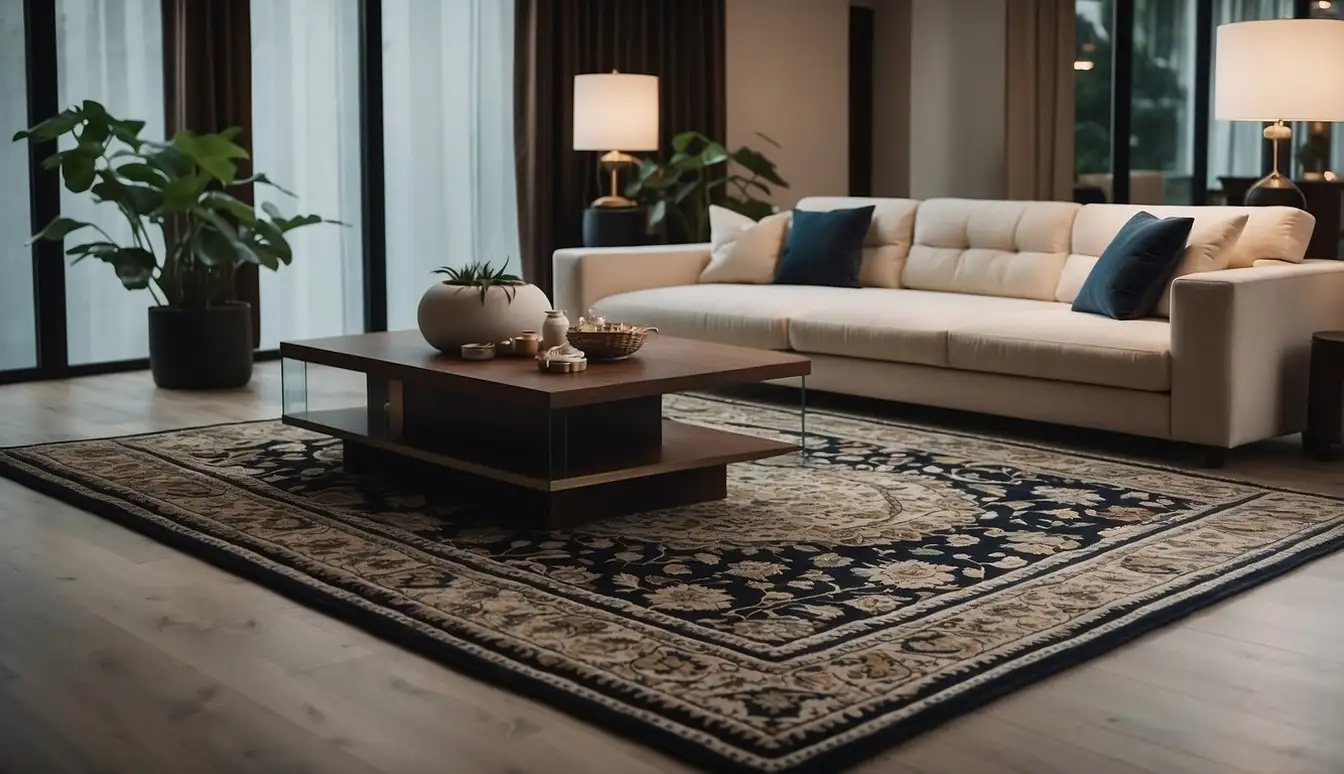
When I introduce handmade area rugs into a space, I’m not just laying down a piece of decor; I’m weaving in elegance and elevating the room’s style.
Incorporating Rugs into Various Design Schemes
I find that including a rug in a design is like selecting the perfect accessory to complete an outfit—it must complement the overall theme while standing out in its own right. For a contemporary design scheme, I usually opt for rugs with bold geometric patterns or minimalist designs that act as a statement piece, effectively anchoring the room’s decor.
In contrast, a traditional design scheme benefits from the timeless appeal of oriental or Persian rugs. These pieces can transform a simple room into a gallery of elegance, where each rug acts like a work of art meticulously crafted by skilled artisans.
Selecting Rugs for Different Rooms
Bedrooms: To enhance the feeling of comfort and tranquility in my bedroom, I tend to choose rugs with softer tones and textures. A plush, hand-knotted rug beside the bed creates a cozy landing for bare feet in the morning, ensuring I start my day in complete comfort.
Living Room: In a living room setting, the rug must serve as a central piece that ties all elements of the room together. Here, I prefer large-scale, elegant designs that don’t overpower the room’s furniture but complement it. It’s essential that the rug speak to the room’s gathering purpose and aesthetic.
Dining Room: The dining area is an excellent room for some stylistic freedom. I’ve seen the space come alive with vibrancy when I include a dynamic, patterned rug. However, it’s crucial to make sure the rug’s material can handle the high-traffic nature of dining spaces and the potential for spills.
By thoughtfully selecting handmade rugs for each room, I am able to enhance both the style and elegance of the space, making each area feel complete and intentionally designed.
Considerations for Online Rug Purchases
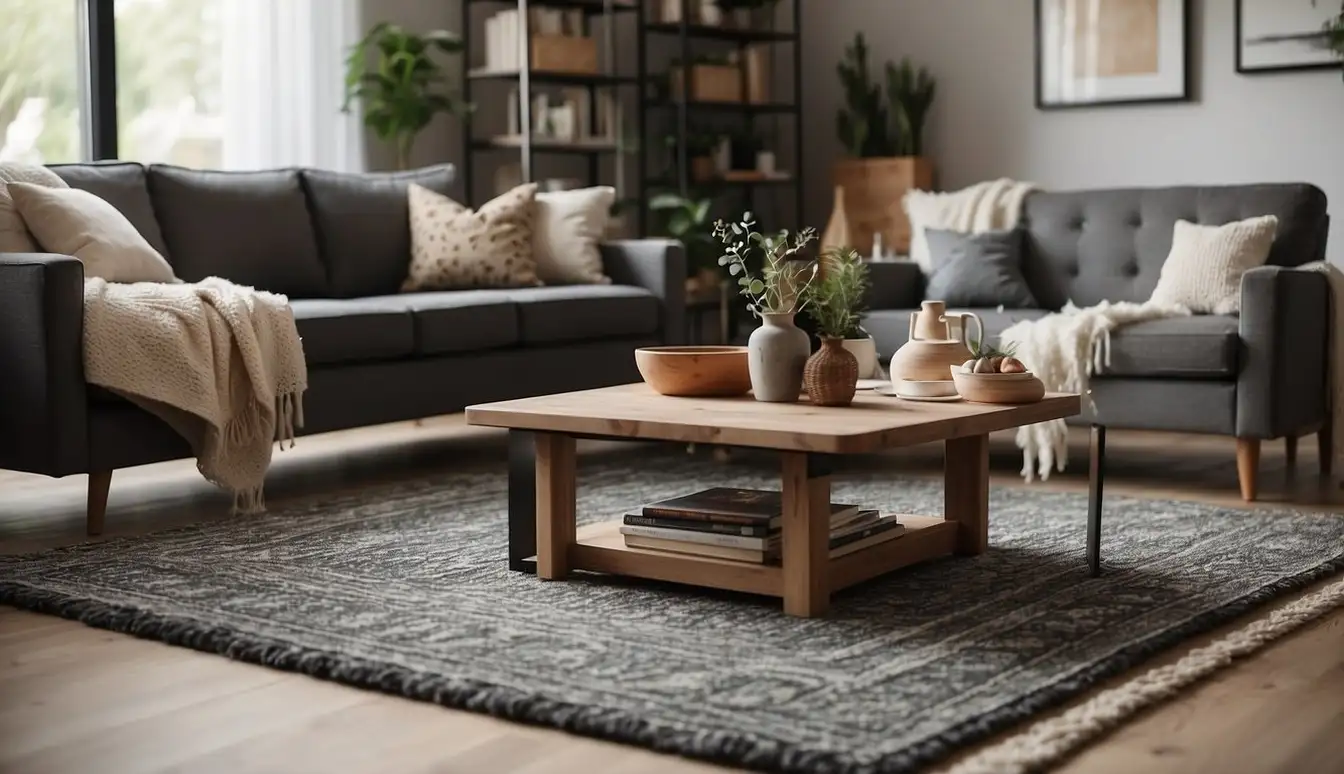
When I shop for rugs online, I focus on several key aspects to ensure I get the perfect addition for my interior design. Here’s how I navigate the process:
Size Matters: Choosing the right size is crucial. I usually leave an 18 to 24-inch border of exposed flooring around the rug to anchor the furniture and create a well-balanced room.
- Small (3′ x 5′ to 4′ x 6′) – Ideal for accent pieces.
- Medium (5′ x 8′ to 6′ x 9′) – Good for small rooms.
- Large (8′ x 10′ to 9′ x 12′) – Can anchor a living room set.
Color and Texture: The color and texture of the rug should complement my furniture and overall room aesthetic. I like to use high-resolution images to get a sense of the rug’s true color and texture. It’s also helpful to read the reviews to see if the colors match the pictures or if there’s any mention of the texture feeling different than expected.
- Neutral tones – They blend seamlessly with most designs.
- Vibrant colors – They add a pop of personality.
Expert Opinions: I often look for advice from interior design experts featured in the product descriptions or blogs linked to the online store. They can provide valuable insights into which styles and designs could work best for my space.
Material Quality: The rug’s material impacts both its durability and how it feels. I always check the details to see whether it’s handmade, which often assures a unique character and better quality.
By considering size, color and texture, expert opinions, and material quality, I can make a well-informed purchase online that satisfies both my style and practical needs, ensuring the rug will be a treasured element in my home’s design for years to come.
Frequently Asked Questions
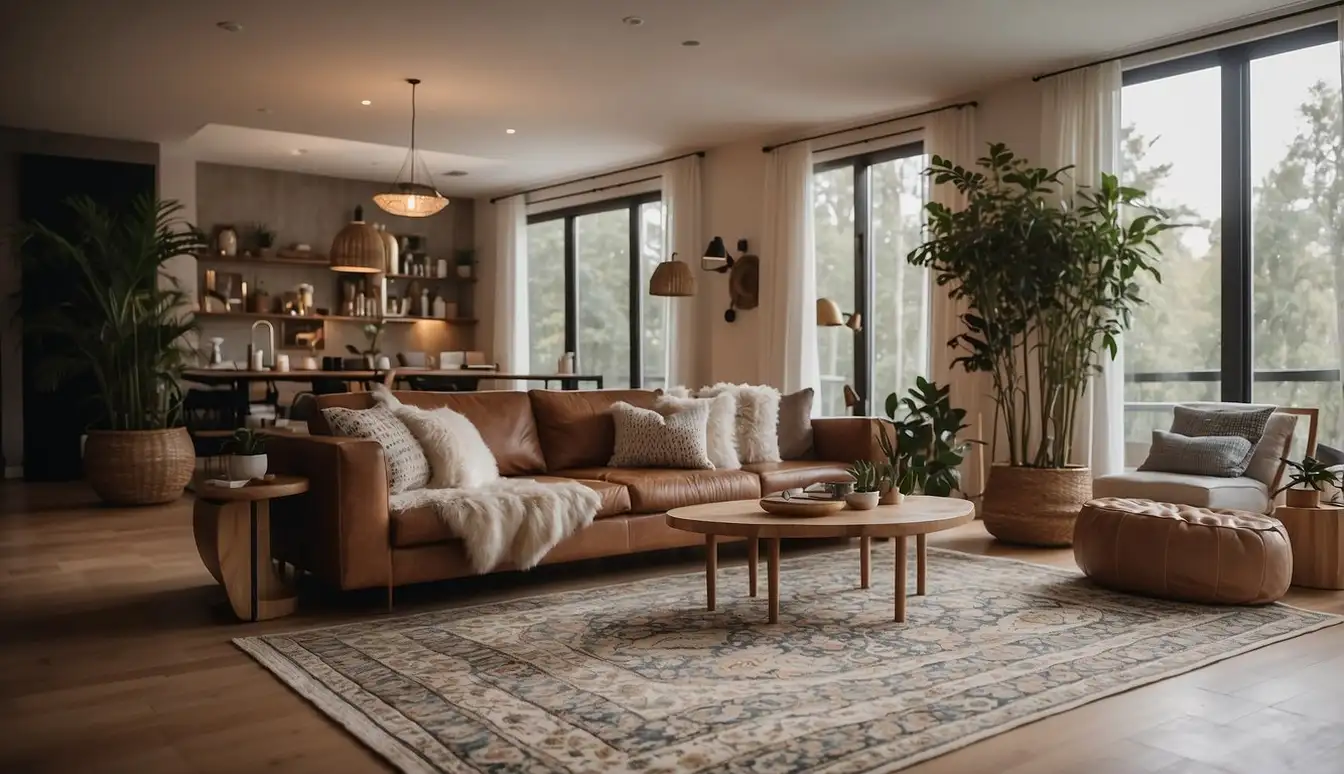
In this section, I aim to address some common inquiries about the role and value of handmade area rugs in home décor.
How do handmade rugs enhance home decor?
Handmade rugs bring a unique charm to home decor by introducing rich textures and craftsmanship that mass-produced rugs cannot match. They add depth, warmth, and a sense of history to any room in which they’re placed.
What makes an area rug a crucial element in interior design?
An area rug serves as a foundational piece that can define a space, anchor furniture, and create coherence among diverse design elements in a room. It’s often one of the first items I consider when planning a space’s design.
What are the benefits of choosing a handmade rug over a machine-made one?
Choosing a handmade rug means investing in durability and quality. These rugs often have a longer lifespan due to the attention to detail and superior materials used. Moreover, they often feature distinct and unique designs that add a personal touch to interiors.
In what ways do handmade rugs reflect cultural and artistic value?
Handmade rugs often embody the traditions and artistic expressions of the culture from which they originate. They can convey stories through their patterns and symbolize a region’s history and heritage, enriching the cultural ambiance of a space.
How do area rugs contribute to the comfort and ambiance of a room?
Area rugs have a way of softening acoustics, providing comfort underfoot, and contributing to a room’s thermal insulation, making the space feel more welcoming and intimate. They can also help delineate zones in open-plan areas, enhancing the room’s flow.
What factors should be considered when selecting a handmade area rug for a space?
When selecting a handmade area rug, I consider the rug’s size, color, pattern, and material—each plays a crucial role in complementing the existing decor. It’s also important to think about the rug’s placement and the amount of traffic the area receives to ensure its longevity.
